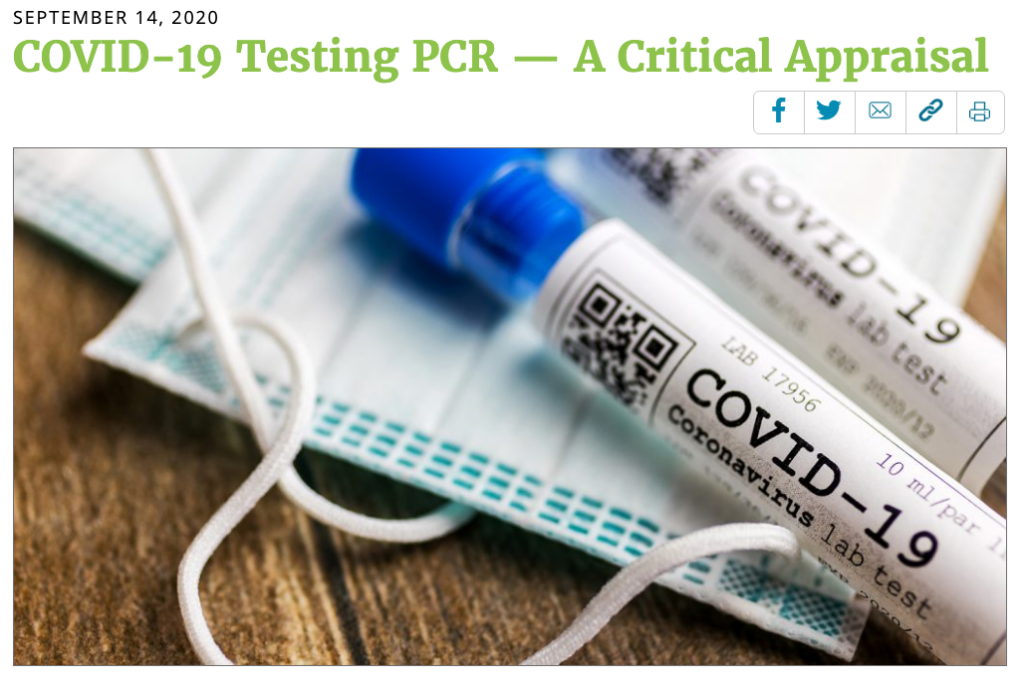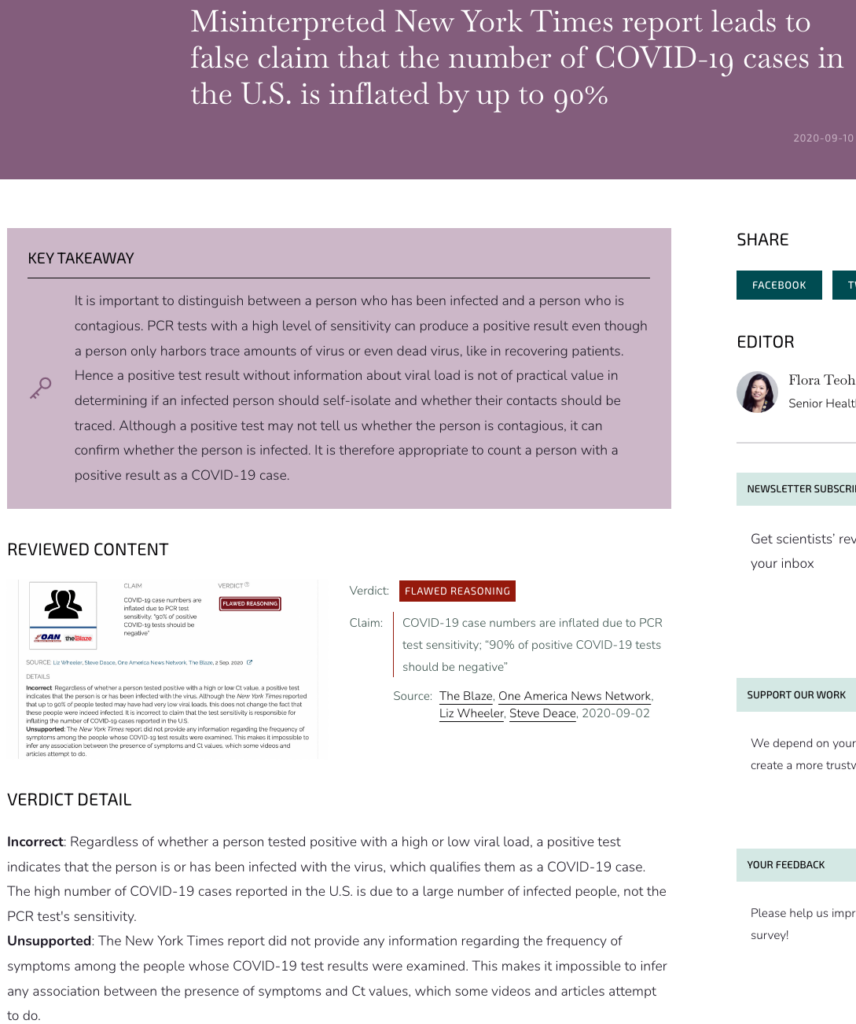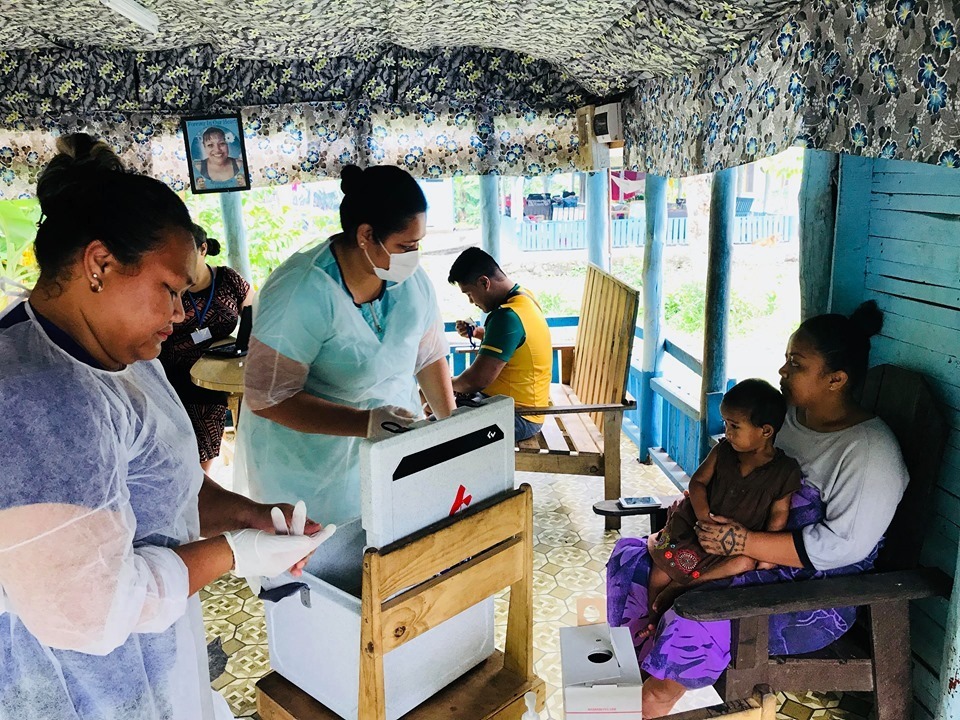MISLEADING CLAIMS
Is COVID-19 PCR testing inaccurate and misleading?
Background
On September 14, 2020, CHD’s Facebook page posted a link to an article on their website: COVID-19 Testing PCR – A Critical Appraisal by Bose Ravenel, M.D., F.A.A.P. Information related to a New York Times article referenced (NYT, 200829) in Ravenel’s article was checked by Science Feedback, an ‘independent third-party fact checker’ working with Meta (which owns Facebook and Instagram, among other platforms).
Contested claim: COVID-19 case numbers are inflated due to PCR test sensitivity; “90% of positive COVID-19 tests should be negative” (CHD, Bose Ravenel, 200914)
Science Feedback’s fact-check
Science Feedback’s fact-check verdict: Flawed Reasoning (200910)
Facebook action: False Information (no link available)
Context: Science Feedback deemed the claim “flawed reasoning,” asserting that it is incorrect and unsupported due to a misinterpretation of the New York Times report (Figure 2). According to the CHD vs. Facebook Complaint, Facebook labeled CHD’s post as “False Information Found on Children’s Health Defense.” However, the screenshot provided in the Complaint appears to be an error, so this warning label needs to be confirmed.
Verdict detail: “Incorrect: Regardless of whether a person tested positive with a high or low viral load, a positive test indicates that the person is or has been infected with the virus, which qualifies them as a COVID-19 case. The high number of COVID-19 cases reported in the U.S. is due to a large number of infected people, not the PCR test’s sensitivity.” (Science Feedback, 200910).
“Unsupported: The New York Times report did not provide any information regarding the frequency of symptoms among the people whose COVID-19 test results were examined. This makes it impossible to infer any association between the presence of symptoms and Ct values, which some videos and articles attempt to do” (Science Feedback, 200910).
Our assessment
Not applicable: While the New York Times article (200829) is quoted in Dr. Ravenel’s piece (200914), it is just one of several articles referenced and is not misinterpreted by the author. In her article, Dr. Ravenel refers to the article twice:
- “Dr. Michael Mina, assistant professor of epidemiology at the Harvard T. H. Chan School of Public Health is quoted in the New York Times article above as saying that this oversimplified interpretation of PCR as positive or negative is ‘irresponsible.’ This relates to the following discussion of the amplification process, sometimes also referred to as cycles.”
- New York Times: “But yes-no isn’t good enough, he added. It’s the amount of virus that should dictate the infected patient’s next steps. ‘It’s really irresponsible, I think, to forgo the recognition that this is a quantitative issue,’ Dr. Mina said.”
- “According to the New York Times article citing virologist Dr. Juliet Morrison, any test with a cycle threshold above 35 is too sensitive (in other words will read positive when the individual is not infectious).”
- New York Times: “Any test with a cycle threshold above 35 is too sensitive, agreed Juliet Morrison, a virologist at the University of California, Riverside. ‘I’m shocked that people would think that 40 could represent a positive,’ she said.”
Dr. Ravenel is distinguishing between the test’s ability to confirm an infection and the test’s ability to determine when the individual is infectious (i.e., contagiousness). This distinction “is the key issue that the New York Times article deals with,” asserts Science Feedback’s fact-check, thus the New York Times article is not “misinterpreted” by Dr. Ravenel, and Science Feedback’s “flawed reasoning” verdict does not apply to Dr. Ravenel’s interpretation of the New York Times report.
Assessment highlights:
- While the New York Times article (200829) is quoted in Dr. Ravenel’s piece (200914), it is just one of several articles referenced and is not misinterpreted by the author.
- Science Feedback’s fact-check does not cite Dr. Ravenel’s piece as a source.
- Dr. Ravenel is distinguishing between the test’s ability to confirm an infection and the test’s ability to determine when the individual is infectious (i.e., contagiousness). This distinction “is the key issue that the New York Times article deals with,” asserts Science Feedback’s fact-check, thus the New York Times article is not “misinterpreted” by Dr. Ravenel, and Science Feedback’s “flawed reasoning” verdict does not apply to Dr. Ravenel’s interpretation of the New York Times report.
Respondent’s reply
CHD filed a lawsuit claiming that Facebook, its CEO Mark Zuckerberg, and associated fact-checking organizations unfairly targeted and censored their content. The lawsuit alleges that this censorship violated CHD’s constitutional rights by collaborating with government entities to suppress free speech, falsely labeling CHD’s content as misinformation, engaging in deceptive and coordinated efforts to discredit their work, and causing significant reputational and financial harm. The following excerpt is taken from CHD’s 2020 complaint document.
Respondent: CHD (CHD vs Facebook Complaint, 201113)
- 4.178 | …Facebook and Science Feedback labeled CHD’s post on CoVID-19 Testing PCR by Bose Ravenel, M.D., F.A.A.P as “False Information Found on Children’s Health Defense.” The “fact-check” placed over the post leads to an opposition article by Science Feedback that claims that a “misinterpreted New York Times report leads to a false claim that the number of COVID-19 cases in the US is inflated up to 90%.” …
- 4.178 | … This “factcheck” is deceptive because, while the New York Times article is quoted in Dr. Ravenel’s piece, it is merely one of several articles referenced by the author, and is not “misinterpreted” at all. …
- 4.178 | … Defendants were aware, or acted in reckless disregard of, these and other specific falsities in the Science Feedback opposition “fact-check,” but posted it on CHD’s page nonetheless, in furtherance of their fraudulent scheme.
Science Feedback’s fact-check is inaccurate
Highlights:
- While the New York Times article (200829) is quoted in Dr. Ravenel’s piece (200914), it is just one of several articles referenced and is not misinterpreted by the author.
- “This ‘factcheck’ is deceptive because, while the New York Times article is quoted in Dr. Ravenel’s piece, it is merely one of several articles referenced by the author, and is not ‘misinterpreted’ at all” (CHD vs Facebook Complaint, 201113).
- Overlaying Science Feedback’s fact-check entitled, “Misinterpreted New York Times report leads to false claim that the number of COVID-19 cases in the U.S. is inflated by up to 90%,” and labeling CHD’s post on COVID-19 PCR testing as “False Information” is inappropriate and deceptive given that Dr. Ravenel did not misinterpret the New York Times report and the nuanced arguments provided in her piece.

















